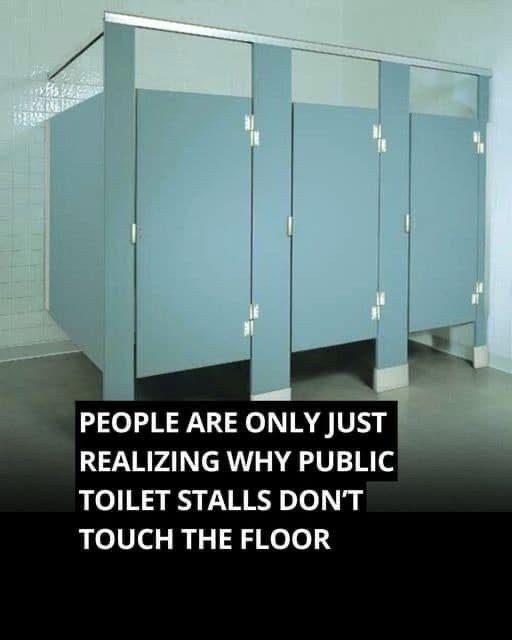I had no clue.
Ever noticed that public restroom stall doors stop short of the floor? At first glance, this design might seem like a strange oversight or a cost-cutting measure. In reality, the gap is intentional and serves multiple important purposes that make public restrooms safer, cleaner, and more efficient.
**Cleanliness Comes First**
One major reason is hygiene. Public restrooms see heavy traffic, and spills are inevitable. The gap allows cleaning staff to quickly mop and sanitize without entering each stall individually. This speeds up maintenance and ensures every corner stays sanitary—critical in high-traffic facilities serving hundreds of people daily.
**Safety in Emergencies**
The open space beneath doors can be lifesaving. If someone faints, has a medical crisis, or gets stuck, the gap allows others to quickly notice and respond. Rescuers can see through the opening or crawl underneath if necessary, providing crucial emergency access that full-length doors would block.
**Better Airflow and Efficiency**
Restrooms can quickly become unpleasant without proper ventilation. The gap helps air circulate, allowing odors to disperse faster and creating a more comfortable environment. Additionally, the design improves efficiency—users can glance at feet beneath doors to check occupancy rather than awkwardly knocking or trying handles, keeping lines moving smoothly in busy locations.
**Preventing Misuse**
Partial doors also increase accountability. Greater visibility deters vandalism and inappropriate behavior, contributing to safer, more respectful use of shared facilities.
**Cost-Effective Construction**
From a practical standpoint, shorter doors require less material, are lighter, and face less wear on hinges and locks. In large facilities with dozens of stalls, these savings add up significantly.
**Not Everyone’s Favorite**
Some users prefer more privacy, and cultural preferences vary—many European restrooms feature floor-to-ceiling doors. However, in North America, this open design balances privacy with practical needs.
So that familiar gap isn’t a mistake—it’s a smart solution to the unique challenges of public spaces.






Post Comment